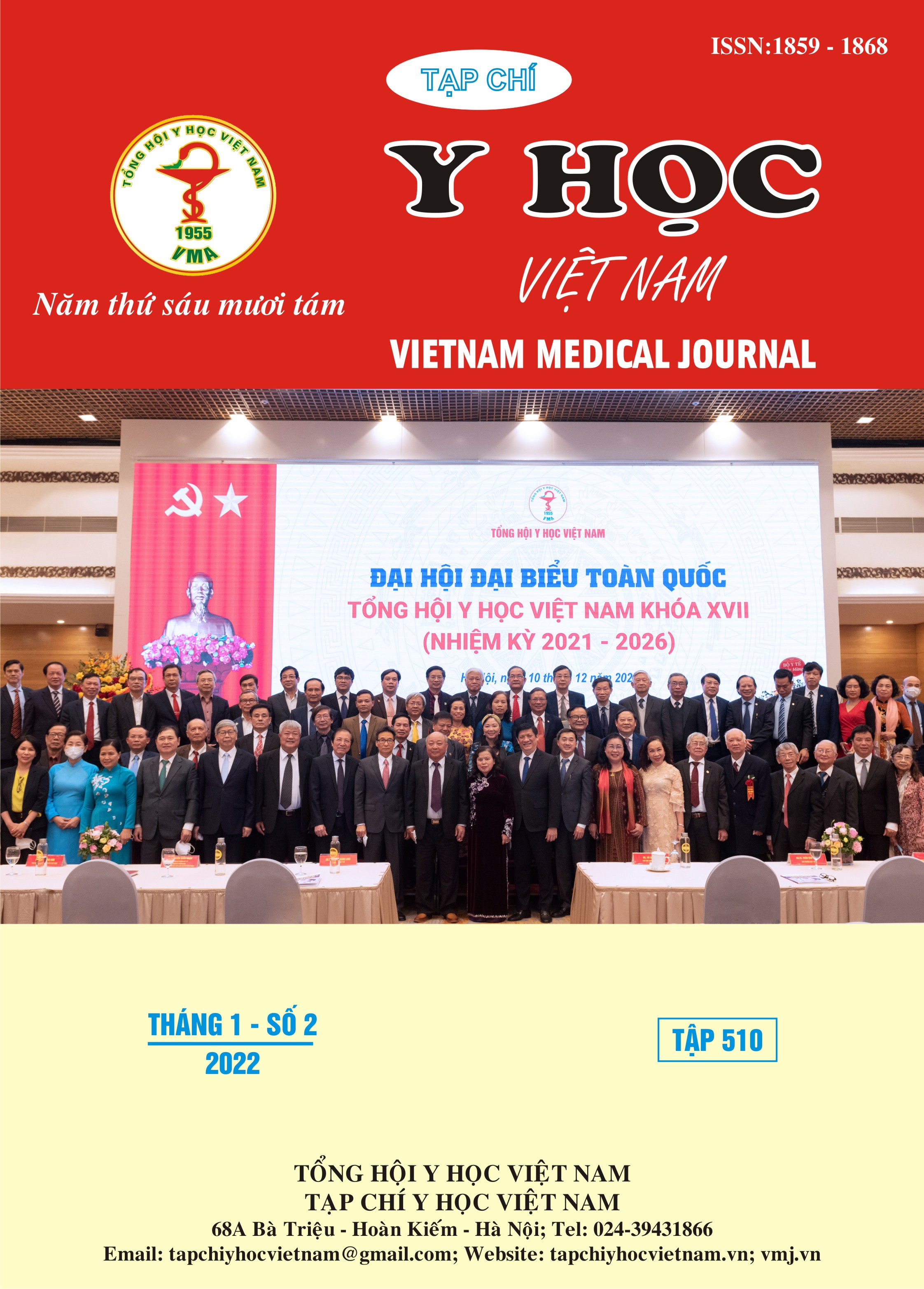OUTCOMES OF LOCKING PLATE OSTEOSYNTHESIS FOR CLOSED HUMERAL SHAFT FRACTURE
Main Article Content
Abstract
The study aimed to evaluate the results of treatment of humeral fractures in adults using locking plate at Viet Duc hospital. Cross-sectional descriptive research method in 75 patients with closed humeral fractures which were fixation by locking plate from 1/2018 to 1/2019. All patients were examination after surgery: assessment of function of shoulder joints, elbow joints, assessment of bone healing on x-ray, complications, classification of results according to modified Neer scale. Evaluation after surgery according to the modified Neer scale, good and very good results accounted for 94,8%. 5 cases of radial nerve paralysis after surgery accounted for 6,7% and all recovered completely after 3-6 months. Complications without bone healing had 1 case, accounting for 1,3%. The combined surgery of the locking screw is a safe method, with good results, and a low complication rate.
Article Details
Keywords
humeral shaft fracture, locking plate, osteosynthesis
References
2. J. R. Chapman, M. B. Henley, J. Agel, and P. J. Benca, “Randomized prospective study of humeral shaft fracture fixation: intramedullary nails versus plates,” J Orthop Trauma, vol. 14, no. 3, pp. 162–166, Apr. 2000, doi: 10.1097/00005131-200003000-00002.
3. Moyikoua A, Ebenga N, Pene-Pitra B, “Fractures récentes de la diaphyse humérale de l’adulte. Place du traitement chirurgical par plaque vissée. A propos de 35 cas opérés,” Rev Chir Orthop, vol. 78, no. 1, pp. 23–27, 1992.
4. A. K. Singh, N. Narsaria, R. R. Seth, and S. Garg, “Plate osteosynthesis of fractures of the shaft of the humerus: comparison of limited contact dynamic compression plates and locking compression plates,” J Orthop Traumatol, vol. 15, no. 2, pp. 117–122, Jun. 2014, doi: 10.1007/s10195-014-0290-2.
5. J.-B. Seo, K. Heo, J.-H. Yang, and J.-S. Yoo, “Clinical outcomes of dual 3.5-mm locking compression plate fixation for humeral shaft fractures: Comparison with single 4.5-mm locking compression plate fixation,” J Orthop Surg (Hong Kong), vol. 27, no. 2, p. 2309499019839608, Aug. 2019, doi: 10.1177/2309499019839608.
6. E. J. Dabezies, C. J. Banta, C. P. Murphy, and R. D. d’Ambrosia, “Plate fixation of the humeral shaft for acute fractures, with and without radial nerve injuries,” J Orthop Trauma, vol. 6, no. 1, pp. 10–13, 1992.
7. Muller T, Seligson D, Sioen W, Van den Bergh J, Raynaert P, “Operative treatment humeral shaft fractures,” 1997, pp. 170–177.
8. N.Osman, C. Touam, E. Masmejean, H. Asfazadourian, and J. Y. Alnot, “Results of non-operative and operative treatment of humeral shaft fractures. A series of 104 cases,” Chir Main, vol. 17, no. 3, pp. 195–206, 1998, doi: 10.1016/s0753-9053(98)80039-2.


